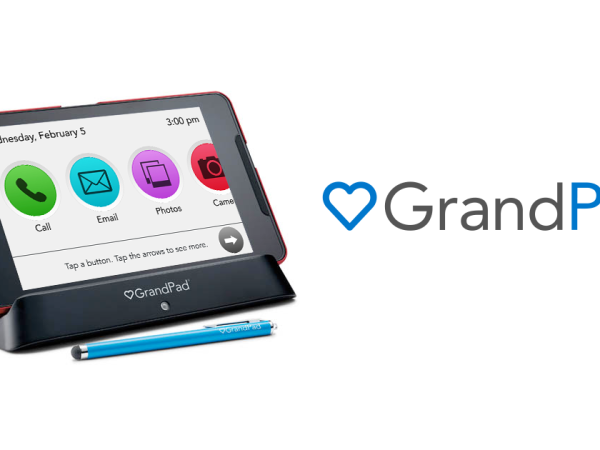Active Listening in Sales: The Key to Closing More Deals

In the world of sales, success isn’t just about talking—it’s about listening. Active listening in sales is a crucial skill that helps sales professionals understand customer needs, build trust, and close more deals.
Top-performing salespeople don’t just pitch their products; they actively listen to prospects, uncover pain points, and provide tailored solutions. Mastering this skill can significantly improve customer relationships, conversion rates, and overall sales performance.
In this article, you’ll learn:
- What active listening is and why it matters in sales
Key techniques for effective active listening
How active listening improves sales conversations
Common mistakes salespeople make and how to avoid them
Actionable steps to enhance active listening skills
Let’s dive in and explore how active listening can take your sales game to the next level!
What Is Active Listening in Sales?
Active listening is the process of fully concentrating, understanding, responding, and remembering what the prospect is saying. It goes beyond just hearing words—it involves:
- Giving your full attention to the prospect.
Asking relevant follow-up questions to clarify needs.
Responding thoughtfully instead of just waiting to talk.
Mirroring and paraphrasing to confirm understanding.
Why it matters: Studies show that top salespeople listen 60-70% of the time and speak only 30-40% of the conversation.
Example: Instead of jumping into a pitch, an active listener might say:
“It sounds like you’re struggling with customer retention. Can you tell me more about the challenges you’re facing?”
Key takeaway: The more you listen, the better you understand your customer’s needs—leading to more relevant solutions and higher conversion rates.
The 5 Key Techniques of Active Listening in Sales
Mastering active listening requires specific techniques to ensure effective communication with prospects.
Give Your Full Attention
- Avoid distractions—put your phone away and focus entirely on the conversation.
Use eye contact (in person) and engaged body language.
Show verbal and non-verbal cues (nodding, saying “I see,” “That makes sense,” etc.).
Tip: If you’re on a sales call, remove background noise and take brief notes while staying engaged.
Ask Open-Ended Questions
- Encourage prospects to share more details about their pain points.
Avoid simple yes/no questions—focus on “how” and “why” inquiries.
Example Questions:
- “What challenges are you currently facing with your current solution?”
- “How do you measure success in this area?”
- “What’s the ideal outcome you’re looking for?”
Why it works: Open-ended questions reveal deeper customer needs, giving you more insights to personalize your pitch.
Paraphrase & Mirror for Clarity
- Repeat back key points in your own words to show understanding.
Use mirroring to subtly repeat a few words from the prospect’s statement.
Example:
Prospect: “Our biggest issue is reducing manual tasks in our workflow.”
Sales Rep: “So automation is a major priority for you?”
Why it works: This technique makes prospects feel heard and understood, building trust and rapport.
Identify Emotional Triggers & Pain Points
- Pay attention to tone of voice, frustration, or enthusiasm.
Dig deeper when you sense emotional reactions to topics.
Example: If a prospect sounds frustrated about inefficiency, respond with empathy:
“I hear that this has been a major frustration for your team. How has it impacted your day-to-day operations?”
Why it works: Emotional pain points often drive purchasing decisions, so identifying them gives you a powerful sales advantage.
Pause Before Responding
Avoid rushing to reply—take a brief pause after the prospect speaks.
Use this time to process what they’ve said and craft a thoughtful response.
Key takeaway: Pausing shows that you’re genuinely considering their words, making conversations feel more authentic and meaningful.
How Active Listening Transforms Sales Conversations
Builds Trust & Credibility
When prospects feel heard, they are more likely to trust your recommendations.
Creates a customer-first sales approach rather than a pushy pitch.
Uncovers Hidden Objections
Prospects may not always openly share objections—active listening helps identify concerns.
Allows you to address doubts early before they become deal-breakers.
Example: If a prospect hesitates after discussing price, ask:
“Is there something specific about the pricing that concerns you?”
Increases Conversion Rates
- Salespeople who listen effectively close more deals because they align solutions with actual needs.
A tailored approach reduces objections and makes the prospect feel valued.
Statistic: Sales teams that implement active listening increase deal closures by up to 20%.
Key takeaway: Listening creates better sales experiences, making prospects more likely to choose you over competitors.
Common Mistakes Salespeople Make (And How to Avoid Them)
- Interrupting Too Soon
Fix: Let the prospect finish speaking completely before responding. - Thinking About Your Response Instead of Listening
Fix: Focus on their words, then pause before replying. - Using a One-Size-Fits-All Pitch
Fix: Adapt your message based on what you learn from active listening. - Ignoring Emotional Cues
Fix: Pay attention to tone, hesitations, and emotional reactions.
Why it matters: Avoiding these mistakes helps you build stronger connections and close deals faster.
Actionable Steps to Improve Active Listening in Sales
- Practice active listening in everyday conversations (not just sales calls).
Record and review sales calls to analyze where you can improve listening skills.
Take notes on key customer concerns and repeat them for clarity.
Use empathy statements like “That makes sense” or “I completely understand why that’s frustrating”.
Join role-play sessions with sales teams to practice real-life scenarios.
Challenge: In your next sales call, aim to listen 70% of the time and talk only 30%—see how the conversation changes!
Conclusion
Active listening isn’t just a nice-to-have skill—it’s a game-changer in sales. By focusing on the customer’s needs, asking insightful questions, and responding thoughtfully, you can build stronger relationships, uncover real problems, and close more deals.
Key Takeaways:
- Top sales reps listen more than they talk.
Active listening builds trust, reduces objections, and improves sales conversations.
Techniques like paraphrasing, pausing, and asking open-ended questions boost engagement.
Avoid common mistakes like interrupting or using generic sales pitches.
Practicing active listening will make you a better communicator and a higher-performing salesperson.
Ready to boost your sales skills? Start using active listening techniques today and watch your close rates soar!
FAQs
1. What is active listening in sales?
It’s the ability to fully focus on the prospect, understand their needs, and respond thoughtfully instead of just waiting to talk.
2. Why is active listening important for salespeople?
It helps sales reps build trust, uncover pain points, and tailor solutions, leading to higher conversions and customer satisfaction.
3. What are the key techniques for active listening in sales?
Give full attention, ask open-ended questions, paraphrase responses, identify emotional cues, and pause before replying.
4. How does active listening improve sales performance?
It makes sales conversations more customer-focused, reducing objections and increasing deal closures by up to 20%.
5. How can I practice active listening in sales?
Record sales calls, role-play with teammates, and challenge yourself to listen 70% and talk 30% in conversations.
Also read: Hotel Ibiti: 10 Must-See Attractions Nearby











